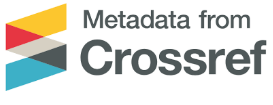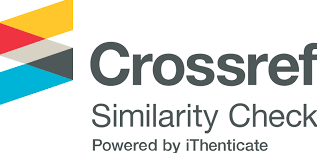Studying on the protective effectiveness of wood treated with nanomaterials TiO 2, ZnO, CuO, SiO2 , nanoclay against wood destroying basidiomycetes and termites
Keywords:
Wood preservation, Coptotermes gestroi, Pleurotus ostreatus,, nanomaterials.Abstract
Nanomaterials TiO2, ZnO, CuO, SiO2, Nanoclay were dispersed in water
solvent and PF for researching wood protective effectiveness. Styrax
tonkinensis wood treated with nanomaterials was tested for determining the
protective effectiveness of wood preservatives against wood destroying
basidiomycetes and termites. Against the rotting fungi Pleurotus ostreatus,
high effectiveness was observed in specimens treated with TiO2 suspensions 0.4% and CuO suspensions (0.1 - 0.2%) by vacuum-pressure method at 0.7Mpa in 60 minutes. Specimens treated with suspensions of other nano material demonstrated average and low effectiveness. High effectiveness was observed in specimens treated with PF 25% with or without nano material by vacuum-pressure method at 0.7Mpa in 120 minutes. Against the termite Coptotermes gestroi, Styrax tonkinensis wood trated with TiO2 suspensions (0.2%), CuO suspensions (0.1 - 0.2%) and ZnO suspensions (0.3 and 0.4%) demonstrated good resistance, while suspensions of the same agents at other concentration illustrated average effectiveness. Low effectiveness was observed at specimens treated with nano clay and nano SiO2. Wood specimens of Styrax tonkinensis treated with nano materials illustrated good effectiveness, while other specimens treated with PF 25%, without nano material illustrated avareage effectiveness.
References
1. Cao Quốc An, 2013. Nghiên cứu ứng dụng vật liệu nano để nâng cao chất lượng ván lạng. Báo cáo tổng kết đề cấp Bộ (2012 - 2013), Bộ Nông nghiệp & PTNT.
2. Nguyễn Thị Bích Ngọc, 2013. Nghiên cứu xử lý gỗ rừng trồng bằng hợp chất vô cơ nhằm nâng cao độ bền tự nhiên, độ ổn định kích thước và khả năng chống cháy. Báo cáo tổng kết đề tài cấp Bộ (2010 - 2012), Bộ Nông nghiệp & PTNT.
3. Nguyễn Quang Trung, 2010. Nghiên cứu xử lý một số loại gỗ rừng trồng từ nhóm V đến nhóm VIII làm nguyên liệu đóng tàu thuyền đi biển. Báo cáo tổng kết đề tài Khoa học & Công nghệ trọng điểm cấp Nhà nước, Bộ Khoa học và Công nghệ.
4. Bak M., Yimmou B. M., Csupor K., Nemeth R. , Csoka L., 2012. Enhancing the durability of wood against wood destroying fungi using nano-zink, International Scientific Conference on Sustainable Development & Ecological Footprint.
5. Clausen C.A., 2007. Nanotechnology: Implications for the wood preservation industry, The international research group on wood protection, IRG/WP 07 - 30415.
6. Clausen C.A., Yang V. W., Arango R. A., Green F., 2009. Feasibility of Nanozinc Oxide as a Wood Preservative, Proceeding One Hundred Fifth Annual Meeting of theAMERICAN WOOD PROTECTION ASSOCIATION, Vol. 105, pp. 255 - 260.
7. Cookson L. J., Damian Kile Scown, Kevin James McCarthy and Narelle Chew, 2007. “The effectiveness of silica treatments against wood boring invertebrates”, Holzforschung, 61, 326 - 332.
8. Giovani De Filpo, 2013. Preventing fungal growth in wood by titandium dioxide nanoparticles, International Biodetioration & Biodegradation, Vol 85, pp: 217 - 222.
9. Kartal S.N., Green F., Clausen C.A., 2009. “Do the unique properties of nanometals affect leachability or efficacy against fungi and termites?”, International Biodeterioration & Biodegradation 63, pp.490 - 495.








